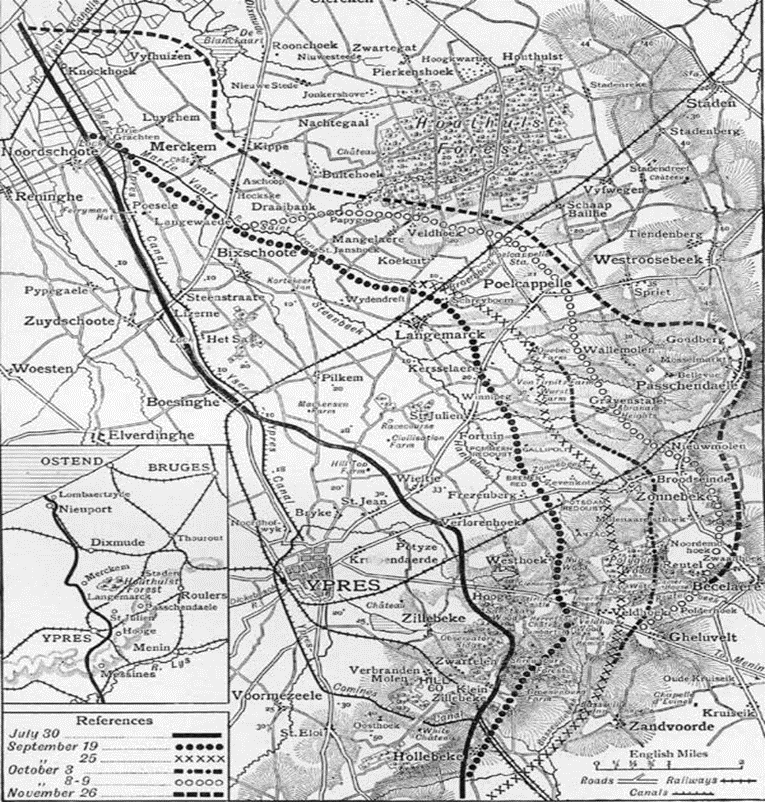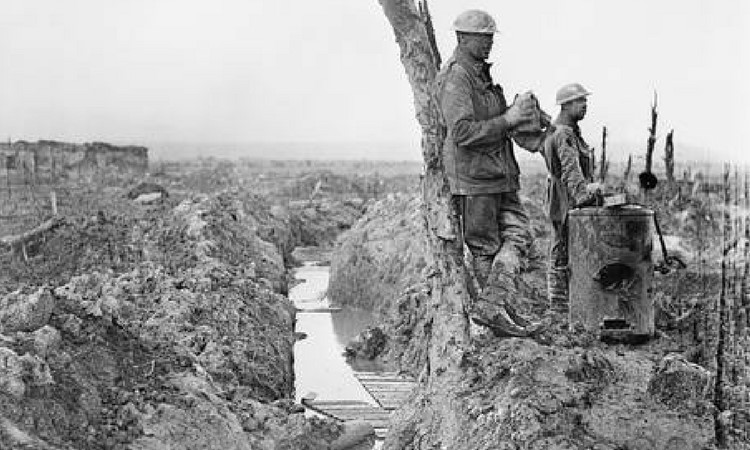GEORGE JAMES HEASMAN
Private, 228699, 1st Battalion, London Regiment (Royal Fusiliers)
Attached 2nd Battalion, Royal Fusiliers
Killed in Action on 9 October 1917 near Ypres, Belgium, aged 35
No known grave. Listed on the Tyne Cot Memorial: Panel 148 to 150

George Heasman
(Click to enlarge)
Private George James Heasman was born in Hartfield in 1882. He lived at Neaves Farm, Hartfield, but previously lived at Pump House, High Steet, Hartfield.
He was the son of George (b.1850) and Emily (née Gadd) Heasman. He was engaged to Miss C.M. Thrift.
In the 1911 census he was aged 28 and listed as an agricultural labourer, as was his father, a widower aged 61. His sister Ethel aged 20 was their housekeeper and his brother Horace was a gardener aged 18. They all lived in the High Street, Hartfield.
His sister Ethel married William George Brown, Fincham Farm, Hartfield, in the summer of 1914, who was killed on 26 September 1917, also in the Third Battle of Ypres, and also with no known grave. Ethel died in 1956.
George Heasman enlisted at Hastings. He was killed in action on 9 October 1917 near Ypres, Belgium, aged 35. He has no known grave and is listed on the Tyne Cot Memorial: Panel 148 to 150.
Tyne Cot Memorial
Source: Commonwealth War Graves Commission
(Click to enlarge)
During 1917 the 2nd Battalion Royal Fusiliers was engaged in the following battles: the First Battle of the Scarpe, the Second Battle of the Scarpe, the Third Battle of the Scarpe, the Battle of Langemarck, the Battle of Broodseinde, the Battle of Poelcapelle, and the Battle of Cambrai.
On the day George Heasman died the Battle of Poelcapelle was raging as part of the Third Battle of Ypres, a major Allied offensive in Flanders which later became known as Passchendaele. The battle marked a turning point in the offensive. Dry weather in September had allowed British, Australian and New Zealand units to advance with the support of massive artillery bombardments. In early October, however, bad weather returned and began to turn the ground into a quagmire.

The Battle of Poelcapelle
(Click to enlarge)
The battle began at 5.20am on 9 October 1917. Assault troops had struggled for hours through miles of mud before even reaching their start lines, and many were exhausted. It proved impossible to bring up sufficient artillery ammunition to support the advance, and the few gains were quickly lost to German counter-attacks. After hours of fighting, most of the attacking units had been pushed back to their starting positions. Only in the north, at the villages of Veldhoek and Poelcappelle, was there any real success.

Scene from Passchendaele
Source: Commonwealth War Graves Commission
(Click to enlarge)
British Empire forces suffered some 12,000 casualties wounded, missing and dead. The CWGC commemorates in Belgium almost 3,400 service personnel who died on 9 October 1917. German losses from the day's fighting are disputed, but were probably similar to the British. As a consequence of the terrible ground conditions many of the wounded could not be rescued.

George Heasman's Victory Medal
(Click to enlarge)
Listed on the war memorial in Hartfield.
Carol O'Driscoll
23 August 2017
Updated 30 September 2022

